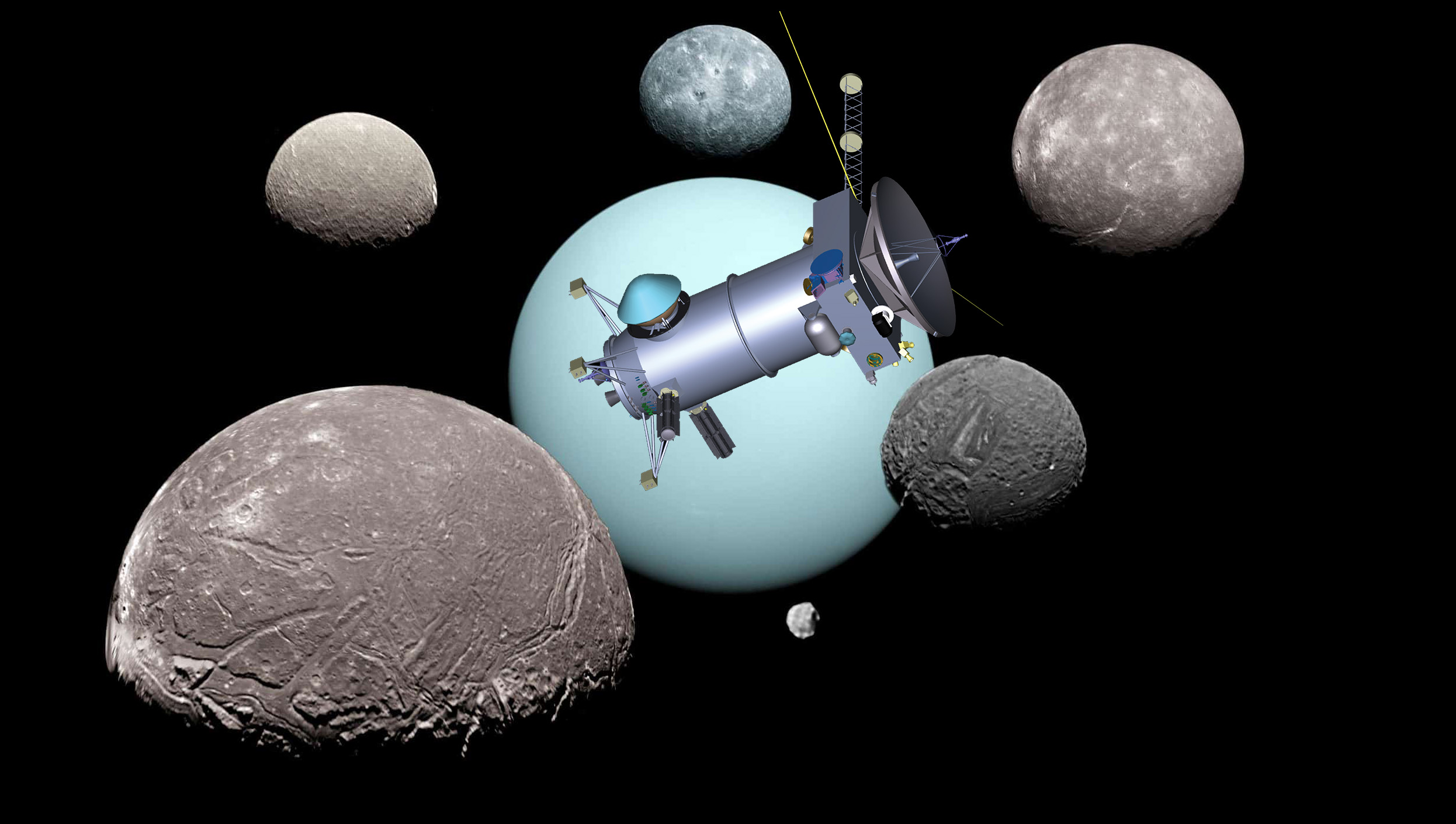
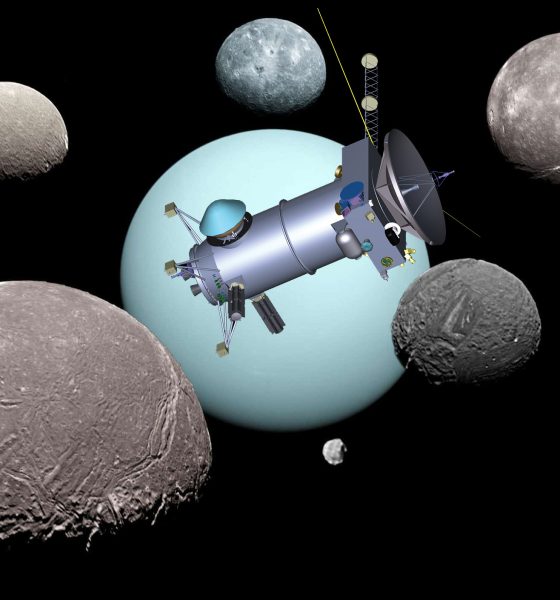
News
SpaceX-launched Uranus mission a top priority of new decadal survey
The National Academies of Sciences, Engineering, and Medicine have published their latest decadal survey of planetary science and astrobiology, revealing a recommendation that NASA prioritize the development of a flagship mission to Uranus baselined to launch on SpaceX’s Falcon Heavy rocket.
Known as the Uranus Orbiter and Probe or UOP, the mission proposal has been under development by a team of NASA, University of California, and Johns Hopkins University scientists and engineers for several years. In fact, a very similar concept ranked third in the Academies’ 2013-2022 decadal survey flagship recommendations, reiterating its central importance and potential value in the eyes of the survey’s dozens of contributors. According to its creators, in its latest iteration, the Uranus Orbiter and Probe have the potential to fully or partially answer 11 of the 12 primary questions the latest Decadal Survey structured itself around.
Additionally, the survey indirectly states that if it weren’t for the existence of one specific technology, it would have been a wash between a mission to Uranus or Neptune. That keystone: SpaceX’s Falcon Heavy rocket.
While the survey’s authors don’t explicitly point to SpaceX in the context of UOP, they do state that “a Uranus mission is favored because an end-to-end mission concept exists that can be implemented in the 2023-2032 decade on currently available launch vehicles.” In reality, there only appears to be one launch vehicle: Falcon Heavy. Three other alternatives do technically exist: United Launch Alliance’s (ULA) Vulcan Centaur, Blue Origin’s New Glenn, and NASA’s own Space Launch System (SLS).
NASA’s Europa Clipper orbiter – originally manifested on SLS but later moved to SpaceX’s Falcon Heavy to avoid major launch delays – has helped demonstrate that SLS isn’t viable for non-Artemis Program missions without massive production improvements and significant workarounds or design changes. While capable in many regards, Blue Origin’s reusable New Glenn rocket appears to have extremely poor performance beyond Earth orbit – well below what UOP requires – and is unlikely to launch before 2024 or 2025. It’s possible that an expendable New Glenn could suffice but Blue Origin has never mentioned the option and, even then, the rocket’s expendable performance could still fall short.
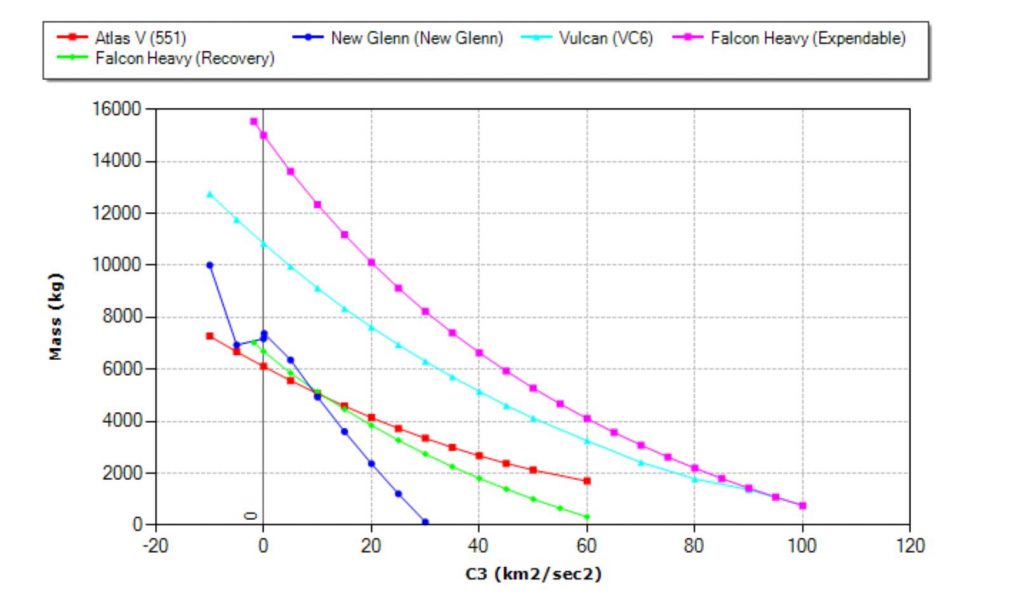
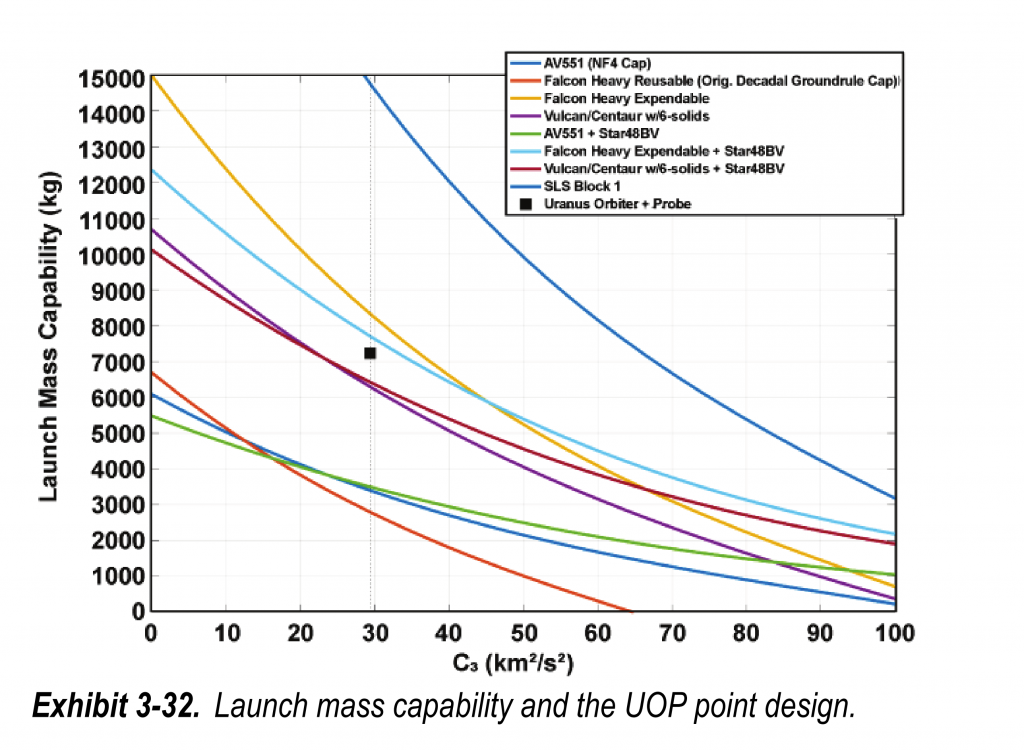
Finally, ULA’s expendable Vulcan Centaur rocket has yet to launch and its debut could easily slip into 2023. More importantly, according to official information provided by the company to a NASA-run performance calculator, even Vulcan’s most capable variant (VC6) with six solid rocket boosters (SRBs) simply doesn’t have the performance required to launch the Uranus Orbiter and Probe (7235 kg / 15,950 lb) on seven of the mission’s preferred trajectories. For three other secondary windows, Vulcan could potentially launch UOP but only with the inclusion of a Venus gravity assist that would require significant design changes to protect the spacecraft while traveling much closer to the sun.
According to NASA’s calculator, a fully-expendable Falcon Heavy rocket with a standard payload fairing could launch around 8.5-10 tons (18,700-22,000 lb) to UOP’s preferred trajectories, leaving a very healthy margin for spacecraft weight gain or launch underperformance and likely enabling a longer launch window for each opportunity.
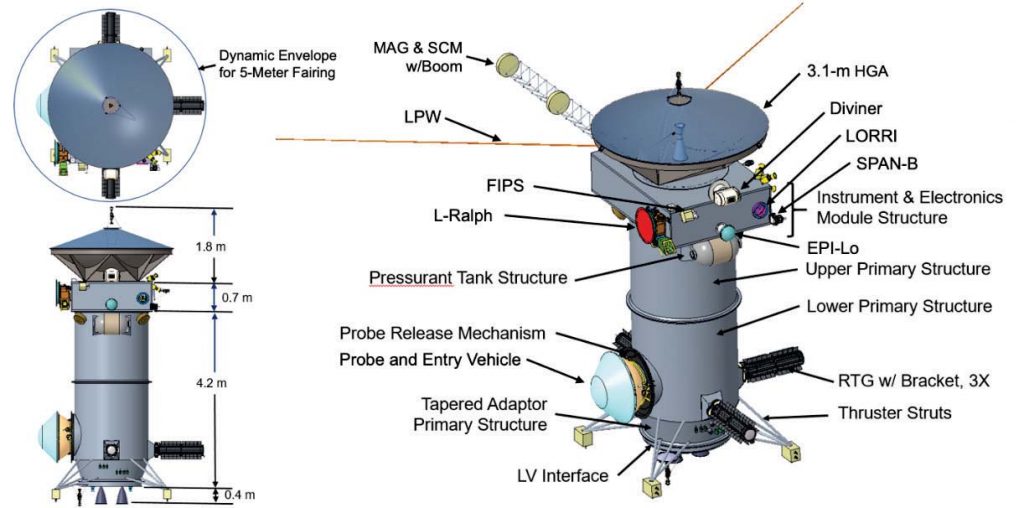
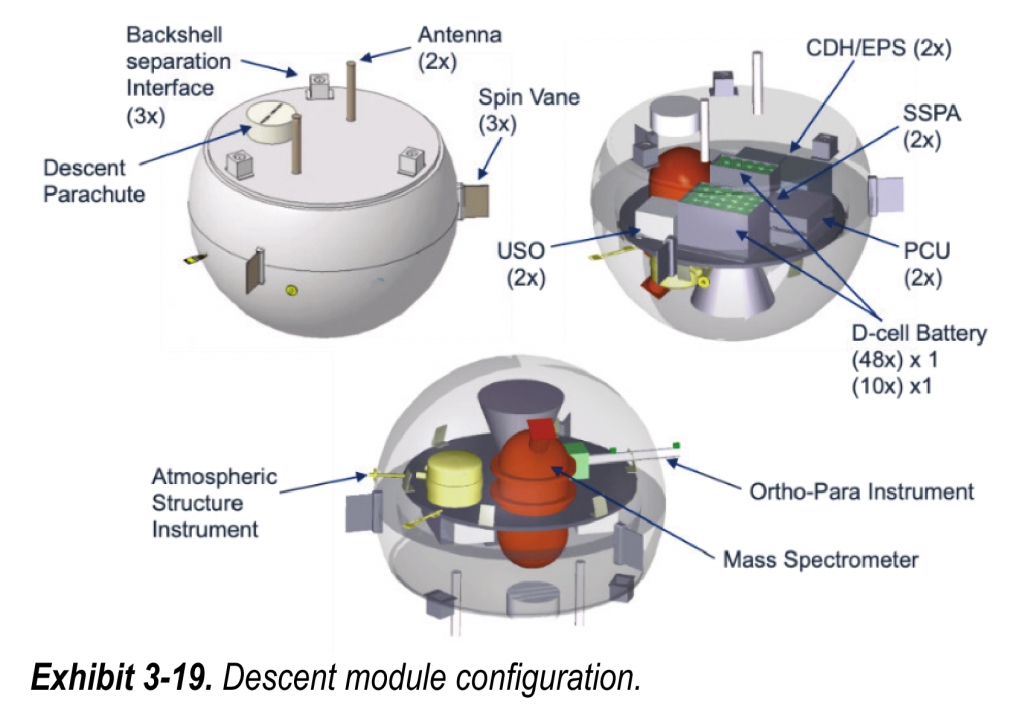
If NASA agrees with the survey’s conclusions, decides to develop the Uranus Orbiter and Probe, and also plans on the Academies’ optimistic assumption of an ~18% budget increase on average from 2023 to 2032, work towards a preferred 2031 launch window could begin in earnest as early as 2024. Comprised of a namesake Orbiter and Probe, UOP would arrive in orbit around Uranus in late 2044 or early 2045 weighing around five metric tons (~11,000 lb). The primary science mission would begin by deploying a small atmospheric probe to directly analyze the composition and behavior of the planet’s exotic atmosphere, which is believed to be volatile, prone to vast and violent storms, and host to some of the most extreme winds in the solar system. The probe would weigh ~270 kilograms (~600 lb) and is only expected to survive for a few hours at most.
The orbiter, however, would continue on to tour the Uranian system for at least four years, observing and studying the ice giant and its rings, magnetosphere, and 27+ moons. Uranus itself resides in what may be the most common class of exoplanets in the universe, making a close study of it invaluable for exoplanet science as a whole. It’s also possible that – like several moons around Saturn and Jupiter – one or more Uranian moons have liquid water oceans created by tidal heating, adding to the list of extraterrestrial bodies that might feature habitable environments or alien life.

News
Tesla Model Y Standard Full Review: Is it worth the lower price?
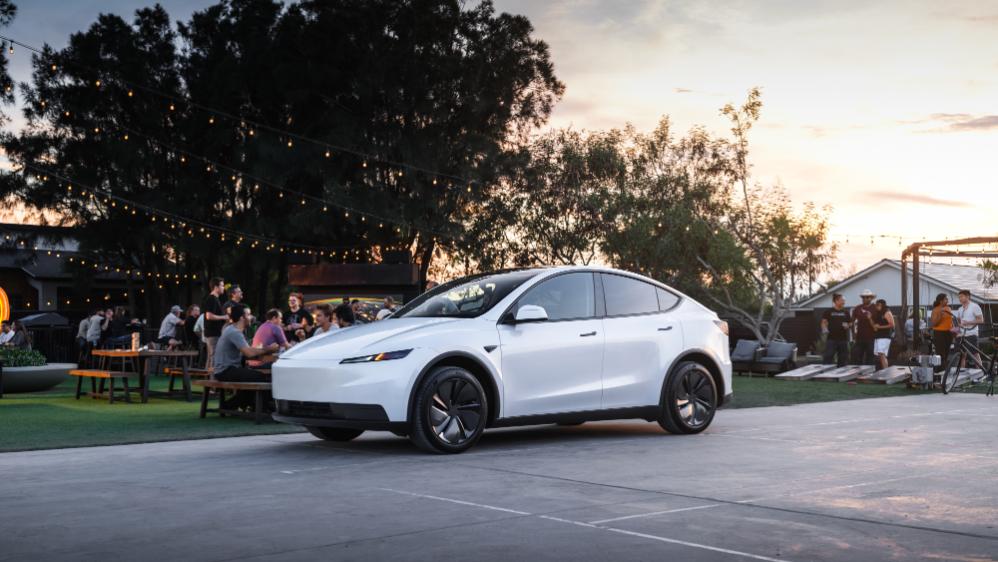
Tesla launched the Model Y Standard as an attempt to offer affordable electric vehicles to consumers now that the $7,500 EV tax credit is gone. We were able to spend four days with the car, and it was more than enough time to determine whether or not the car was worth the $9,000 discount compared to the Premium All-Wheel-Drive configuration, which is what I drive daily.
The Model Y Standard was stripped of some of the features that are present in the Premium trims of the Model Y: no glass roof, a sound system with roughly half the speakers, fewer acoustic-lined glass windows, less storage, and less functionality from an interior standpoint.
However, there are some real advantages to purchasing a Standard Model Y, and there are a handful of situations where this car would be well-suited.
Do I think it is worth the lower price? Well, I’ll get to that later in this article.
Initial Thoughts
In my first impressions review of the Model Y Standard, I talked about the face-value differences between my Model Y Premium and the new, more affordable trim. You will first notice the lack of storage between the front two seats, as the cupholder and additional storage bin sliding doors are void. You still get the cupholders, but they are exposed, which isn’t a huge deal, but it definitely takes away from the sleek look the Premium trim offers.
Additionally, the textile seats replace those of the vegan leather that is available in the upper-level trims. I mentioned previously that I could take or leave the vegan leather for the textile seats, as they are easy to clean, quick drying, and hide oils from your skin much better than leather does.
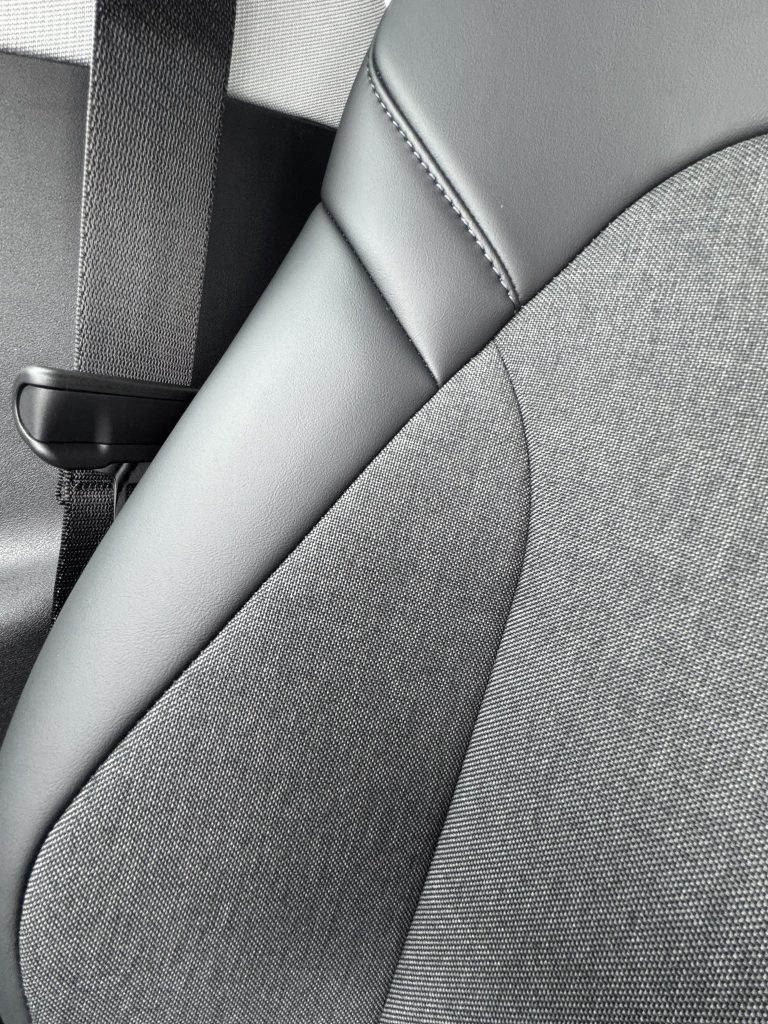
However, there comes one big sacrifice that I have been spoiled by, as the textile seats are not ventilated, so say goodbye to cooling your keister in the Summertime.
The lack of a glass roof is something many owners might not even notice. However, I have been spoiled by the glass roof in my car, and I look out of it every time I’m in my car. It is one of my favorite features, without a doubt. While it would not be a dealbreaker for me, it would be something I would miss terribly.
Things I Noticed After Several Days
Cabin Noise
One of the biggest things I noticed after the first two days in the Model Y Standard is that the cabin is much louder than the Premium. This is because Tesla did not acoustically line all of the glass in the Standard configuration, as it did in the Premium. The side windows are not treated, just the windshields. Therefore, you notice the noise level in the cabin is louder than in the Premium.
If you had not been driving in a Premium trim for a few months, you might not notice it. However, it is something that is a big sacrifice when moving to a different trim level, especially one that is less premium than what you might currently drive.
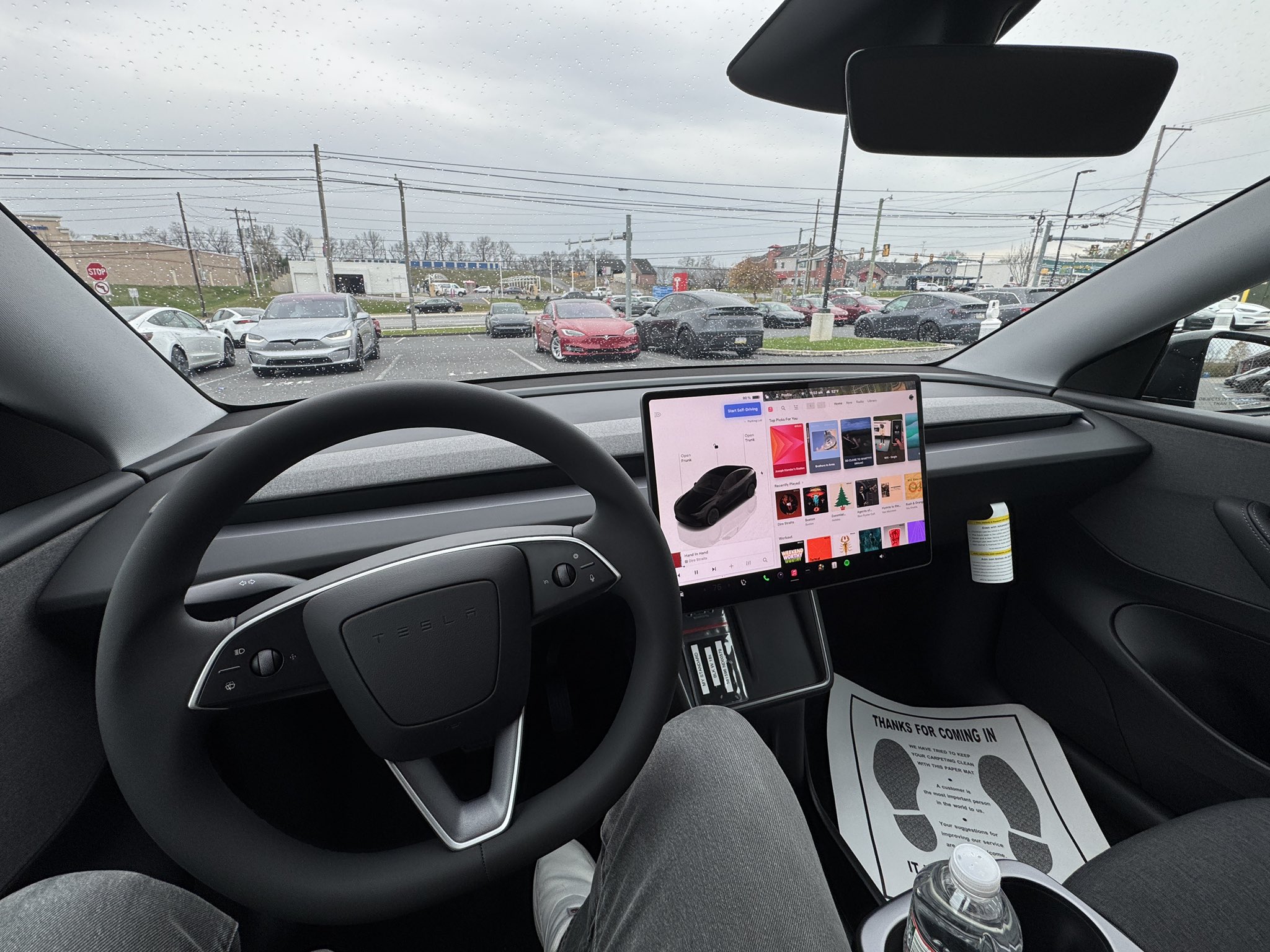
I have always been so shocked at how amazingly quiet the Premium trim’s cabin is; my Model Y is extremely peaceful, even when I’m sitting in bumper-to-bumper traffic, and people have modified mufflers and exhaust systems, tractor-trailers are going by, or crotchrockets are zipping by on the interstate.
This is a huge difference between the two cars, and it is something that is really hard to get used to. I know, first-world problems, right? But when you’re paying between $39,990 and $48,990 for a car, those little things truly do matter.
Stereo System Differences
Another thing I was very aware of was how weak the sound system is. I think if I had bought a Standard Model Y, I would have looked at having the speakers and subwoofers upgraded; I was almost disappointed in how much of a change it was between the two cars.
When I finally picked up my Model Y Premium on Friday (which had been detailed by the awesome team at Tesla Mechanicsburg), the first thing I did was crank up the volume and listen to some music. I really missed having a premium sound system.
Ride Quality
There are virtually no differences between the two cars in terms of ride quality. They are both extremely fun to drive, and the suspension in the Model Y Standard feels perhaps a little bit stiffer than the Premium. Regardless, I didn’t truly notice all that much of a change.
Driving this car around windy roads and tight turns was just as fun as my Model Y Premium. It was a blast to test out, and the slight change in feel was welcome. It’s always fun to drive new cars.
Performance
This is the first EV I’ve ever ridden in where I did not feel that awesome sensation of instant torque. It’s still a quick car, but it is missing that pep in its step that many of us have become accustomed to.
If you want to get someone’s true reaction to EV acceleration, let me just put it this way: This is not the car to do it in.
Some Little-Known Facts About the Model Y Standard
Most of us know that the Model Y Standard has a glass roof, but it is opaque, so even if you took out the headliner, you still would not see out of it. However, there is an interesting little tidbit from a Service perspective that does not make much sense.
If the Model Y glass roof cracks or is broken and needs to be replaced, Service is required to pull off the entire headliner and topside interior to access the glass. It cannot be replaced from the outside. In the Premium, because the glass is exposed, it is a much simpler process to replace the glass. This was an interesting thing I learned.
Additionally, the seat controls are only available on the center screen, which makes it difficult to adjust the seat if you are larger than the person who sat in the car previously. In order to adjust the seat, you’ll have to lean over the chair, access the controls from the screen, and adjust it manually before getting in.
Is the Tesla Model Y Standard Worth the Cheaper Price?
For an additional $9,000 to buy the Model Y Premium AWD, you would get a more capable powertrain, a quieter cabin, better performance, an upgraded interior, more storage, a better sound system, and more luxury features.
To me, the Standard is a car that seems extremely ideal for a teenager’s first vehicle (I got a $1,500 1998 VW Jetta K2 with 200,000 miles when I was 16), or a fleet vehicle. This would be the perfect car for salespeople to use: it does not have all the bells and whistles, it is efficient, and it is just what is needed to drive around to meetings.
For a personal car, it really depends on what you think you need. Admittedly, I’ve been spoiled by the Premium configuration, and personally, I wouldn’t go down to the Standard after owning a Premium trim.
News
Tesla’s new Holiday perk is timed perfectly to make FSD a household name
Tesla AI4 owners get FSD (Supervised) through Christmas, New Year’s Eve and well into the post-holiday travel season.

Tesla quietly rolled out a free Full Self-Driving (Supervised) trial for roughly 1.5 million HW4 owners in North America who never bought the package, and the timing could very well be genius.
As it turns out, the trial doesn’t end after 30 days. Instead, it expires January 8, 2026, meaning owners get FSD (Supervised) through Christmas, New Year’s Eve and well into the post-holiday travel season. This extended window positions the feature for maximum word-of-mouth exposure.
A clever holiday gift
Tesla watcher Sawyer Merritt first spotted the detail after multiple owners shared screenshots showing the trial expiring on January 8. He confirmed with affected users that none had active FSD subscriptions before the rollout. He also observed that Tesla never called the promotion a “30-day trial,” as the in-car message simply reads “You’re Getting FSD (Supervised) For the Holidays,” which technically runs until after the new year.
The roughly 40-day period covers peak family travel and gatherings, giving owners ample opportunity to showcase the latest FSD V14’s capabilities on highway trips, crowded parking lots and neighborhood drives. With relatives riding along, hands-off highway driving and automatic lane changes could become instant conversation starters.
Rave reviews for FSD V14 highlight demo potential
FSD has been receiving positive reviews from users as of late. Following the release of FSD v14.2.1, numerous owners praised the update for its smoothness and reliability. Tesla owner @LactoseLunatic called it a “huge leap forward from version 14.1.4,” praising extreme smoothness, snappy lane changes and assertive yet safe behavior that allows relaxed monitoring.
Another Tesla owner, @DevinOlsenn, drove 600 km without disengagements, noting his wife now defaults to FSD for daily use due to its refined feel. Sawyer Merritt also tested FSD V14.2.1 in snow on unplowed New Hampshire roads, and the system stayed extra cautious without hesitation. Longtime FSD tester Chuck Cook highlighted improved sign recognition in school zones, showing better dynamic awareness. These reports of fewer interventions and a more “sentient” drive could turn family passengers into advocates, fueling subscriptions come January.
Elon Musk
Elon Musk predicts AI and robotics could make work “optional” within 20 years
Speaking on entrepreneur Nikhil Kamath’s podcast, Musk predicted that machines will soon handle most forms of labor, leaving humans to work only if they choose to.
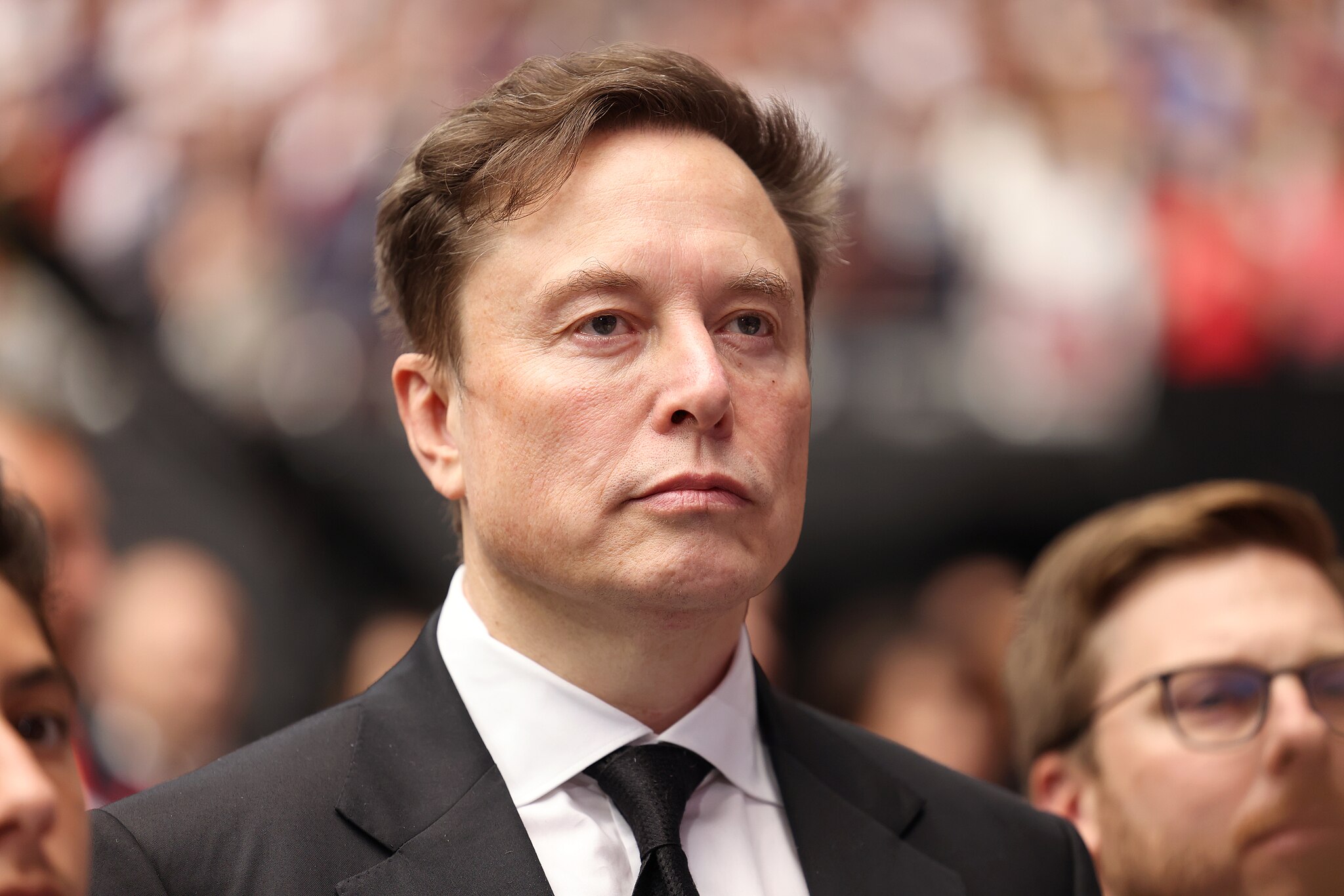
Elon Musk stated that rapid advances in artificial intelligence and robotics could make traditional work unnecessary within two decades.
Speaking on entrepreneur Nikhil Kamath’s podcast, Musk predicted that machines will soon handle most forms of labor, leaving humans to work only if they choose to.
Work as a “hobby”
During the discussion, Musk said the accelerating capability of AI systems and general-purpose robots will eventually cover all essential tasks, making human labor a choice rather than an economic requirement. “In less than 20 years, working will be optional. Working at all will be optional. Like a hobby,” Musk said.
When Kamath asked whether this future is driven by massive productivity growth, Musk agreed, noting that people will still be free to work if they enjoy the routine or the challenge. He compared future employment to home gardening, as it is something people can still do for personal satisfaction even if buying food from a store is far easier.
“Optional” work in the future
Elon Musk acknowledged the boldness of his claim and joked that people might look back in 20 years and say he was wrong. That being said, the CEO noted that such a scenario could even happen sooner than his prediction, at least if one were to consider the pace of the advancements in AI and robotics.
“Obviously people can play this back in 20 years and say, ‘Look, Elon made this ridiculous prediction and it’s not true,’ but I think it will turn out to be true, that in less than 20 years, maybe even as little as ten or 15 years, the advancements in AI and robotics will bring us to the point where working is optional,” Musk said.
Elon Musk’s comments echo his previous sentiments at Tesla’s 2025 Annual Shareholder Meeting, where he noted that Optimus could ultimately eliminate poverty. He also noted that robots like Optimus could eventually provide people worldwide with the best medical care.









